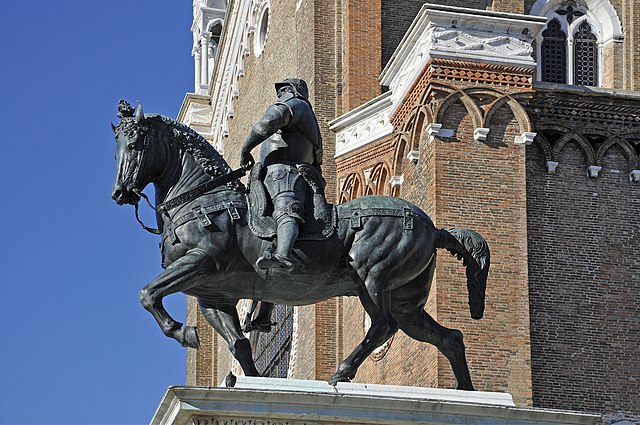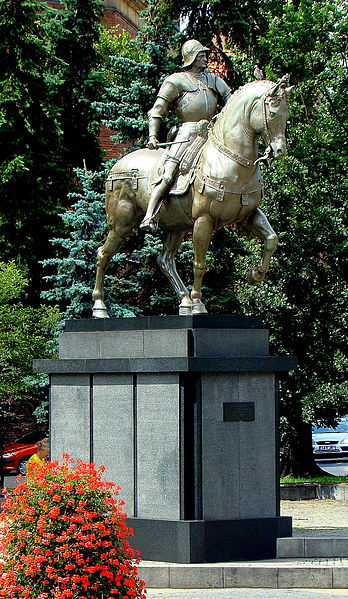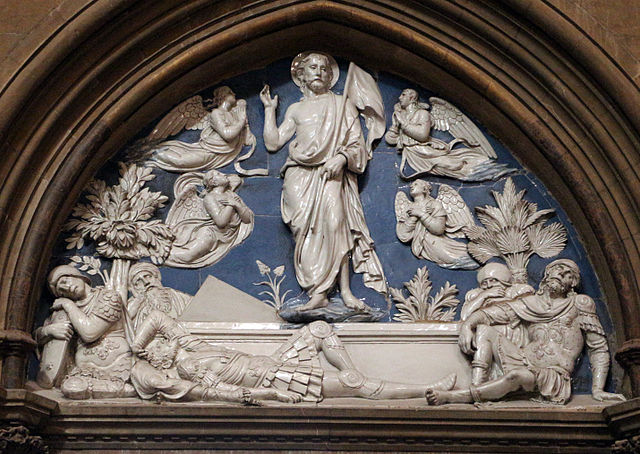Equestrian statue of Bartolomeo Colleoni
The Equestrian statue of Bartolomeo Colleoni is a Renaissance sculpture in Campo Santi Giovanni e Paolo, Venice, Italy, created by Andrea del Verrocchio in 1480–1488. Portraying the condottiero Bartolomeo Colleoni, it has a height of 395 cm excluding the pedestal. It is the second major equestrian statue of the Italian Renaissance, after Donatello's equestrian statue of Gattamelata (1453).
The statue today
19th-century photo of the statue
Another view
Bartolomeo Colleoni Monument at Lotników Square, Szczecin, Poland
Italian Renaissance sculpture
Italian Renaissance sculpture was an important part of the art of the Italian Renaissance, in the early stages arguably representing the leading edge. The example of Ancient Roman sculpture hung very heavily over it, both in terms of style and the uses to which sculpture was put. In complete contrast to painting, there were many surviving Roman sculptures around Italy, above all in Rome, and new ones were being excavated all the time, and keenly collected. Apart from a handful of major figures, especially Michelangelo and Donatello, it is today less well-known than Italian Renaissance painting, but this was not the case at the time.

Painting of the Piazza della Signoria and Loggia dei Lanzi in Florence, 1830, Carlo Canella. From left, Fountain of Neptune, Rape of the Sabine by Giambologna, David by Michelangelo, one of the Medici Lions, Perseus with the Head of Medusa by Benvenuto Cellini, hiding Hercules and Cacus by Baccio Bandinelli. Away from the loggia wall, the Medici Pasquino Group, copying an ancient Roman subject.
Francesco Laurana, A Princess of the House of Aragon, c. 1475
Michelangelo's Pietà, completed in 1499.
Luca della Robbia, Resurrection, glazed terracotta, 1445.








